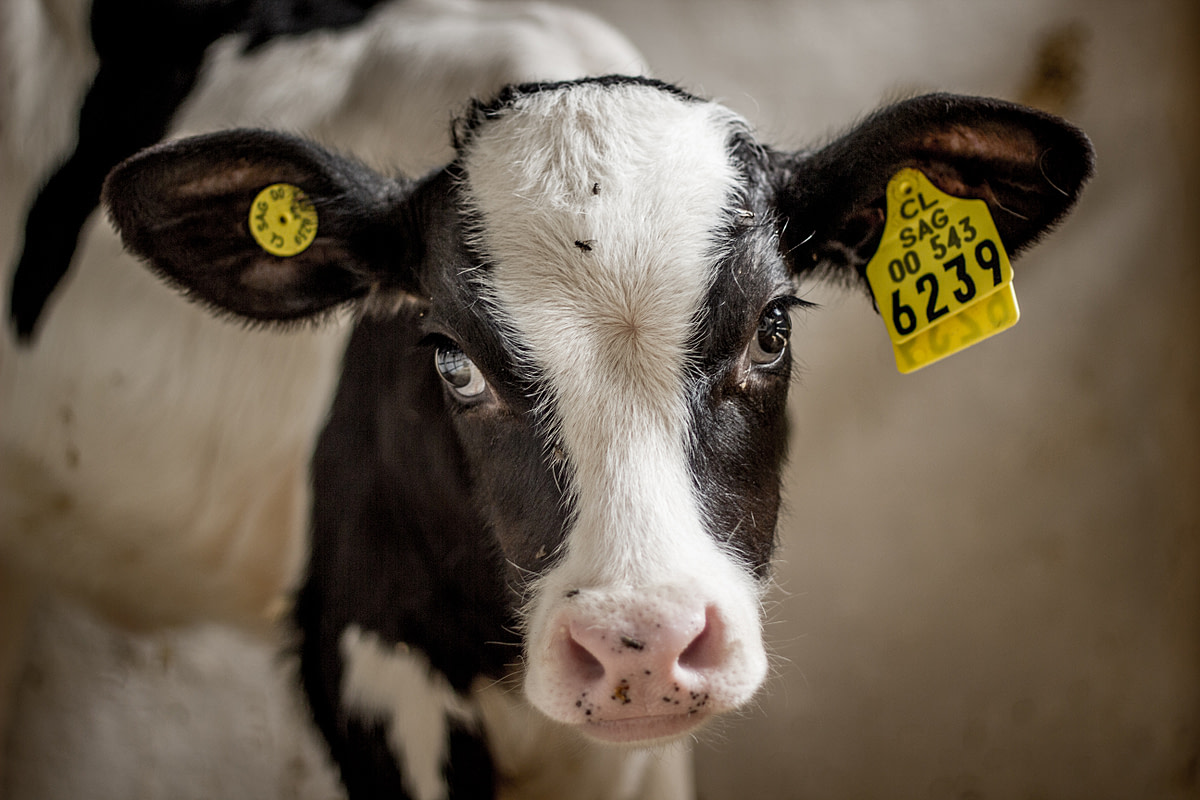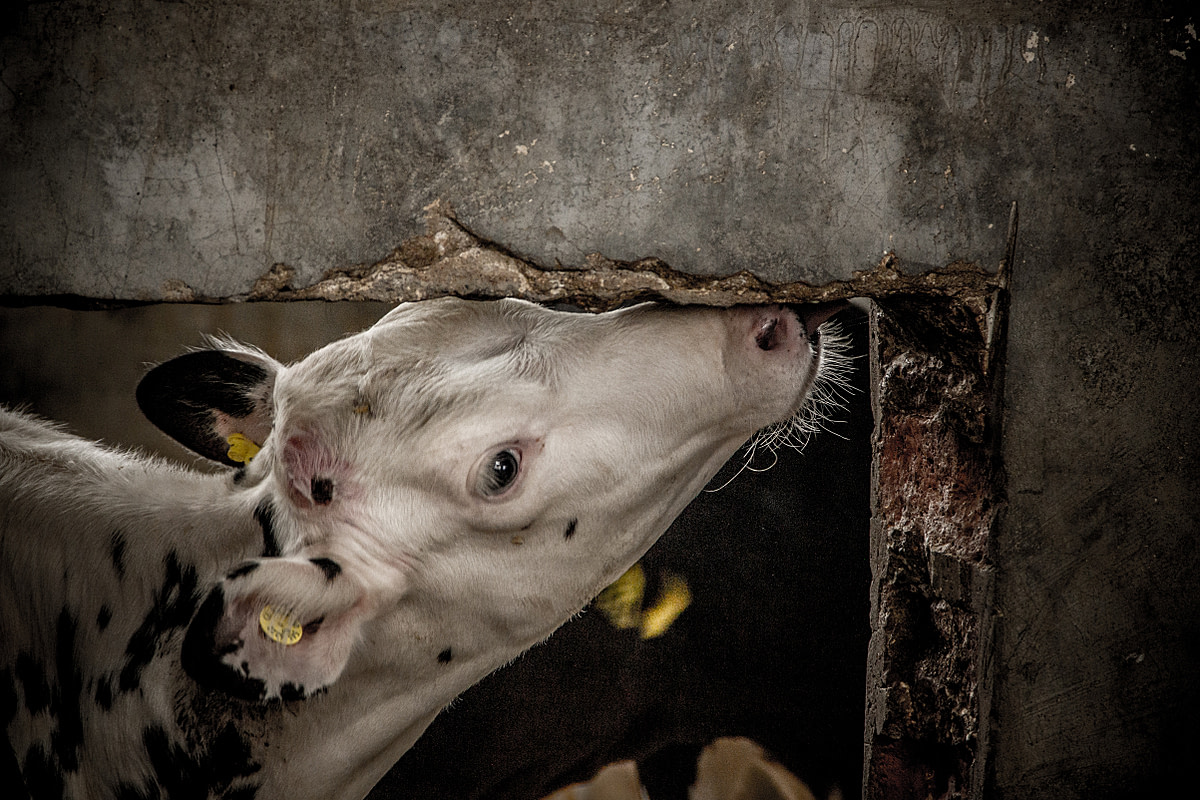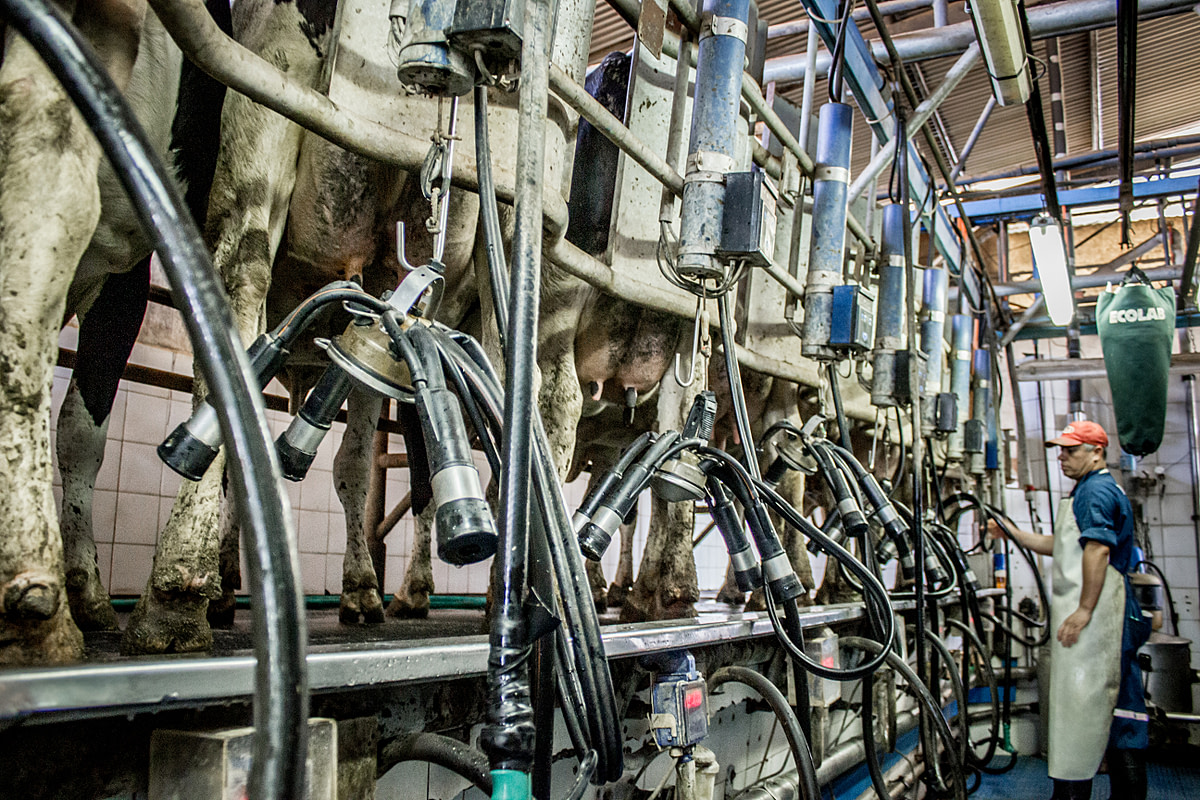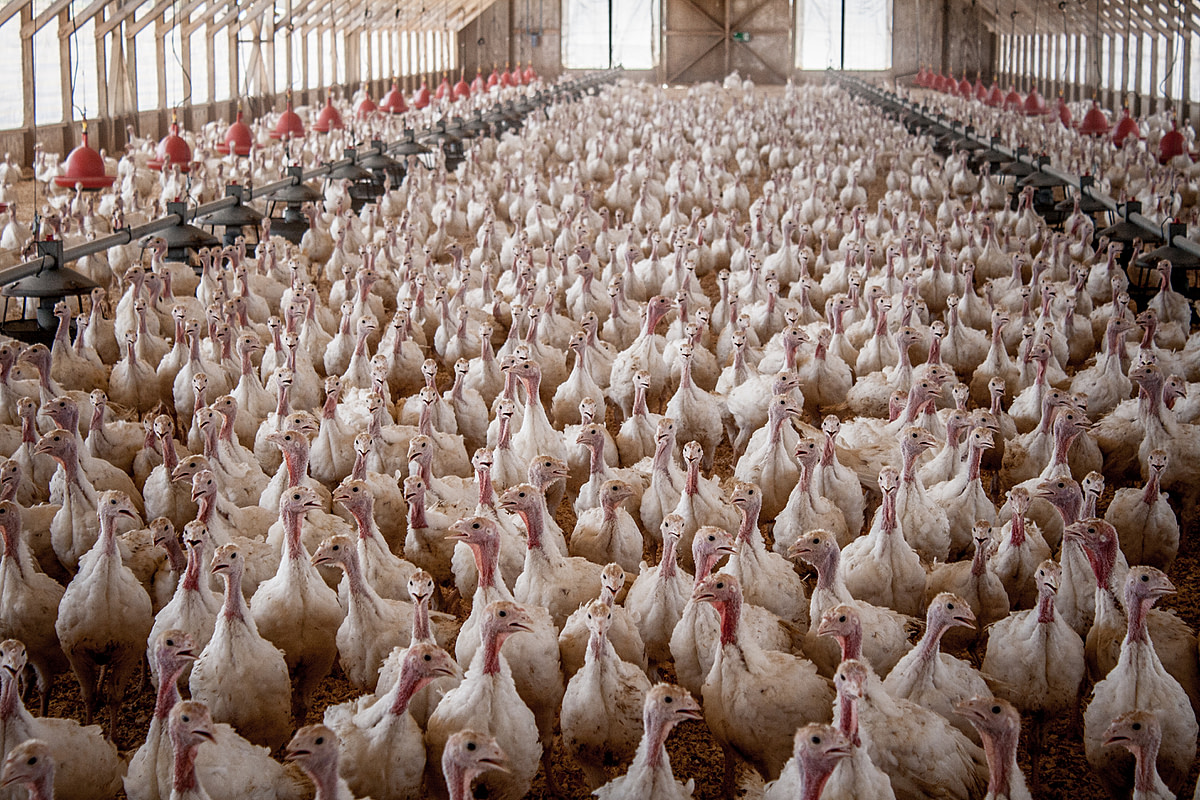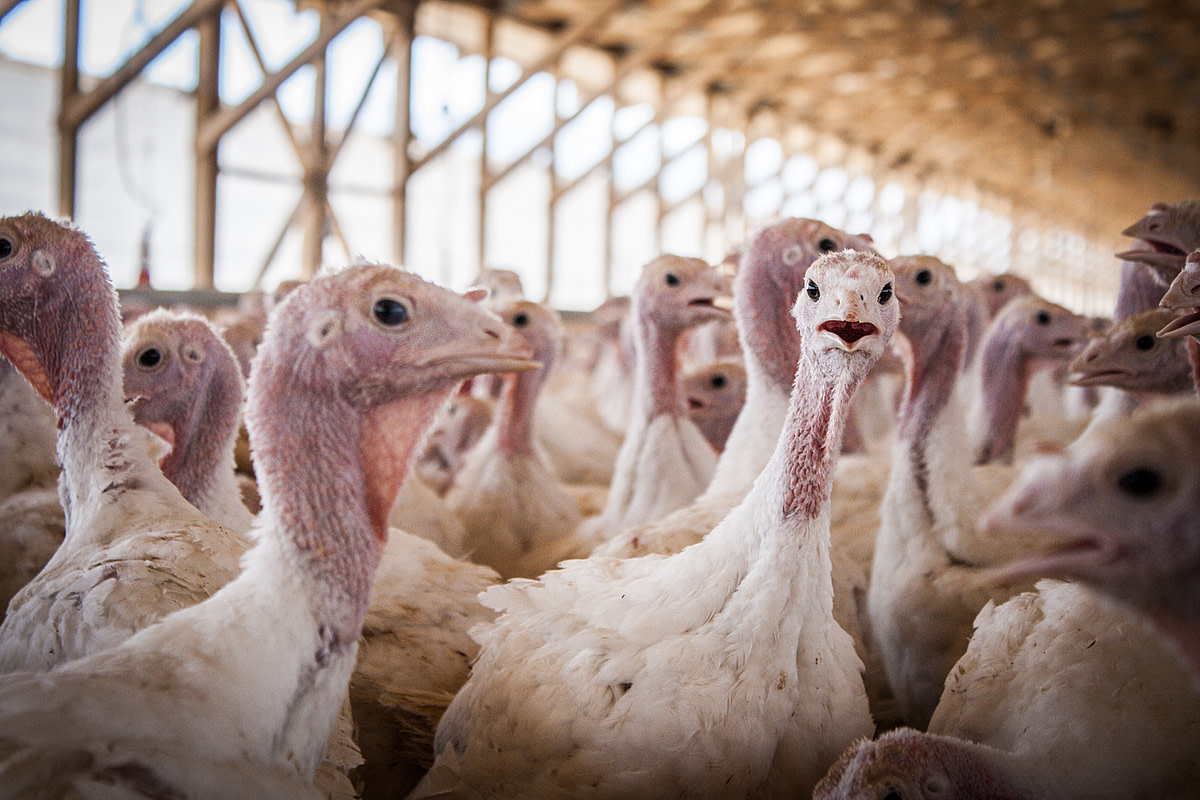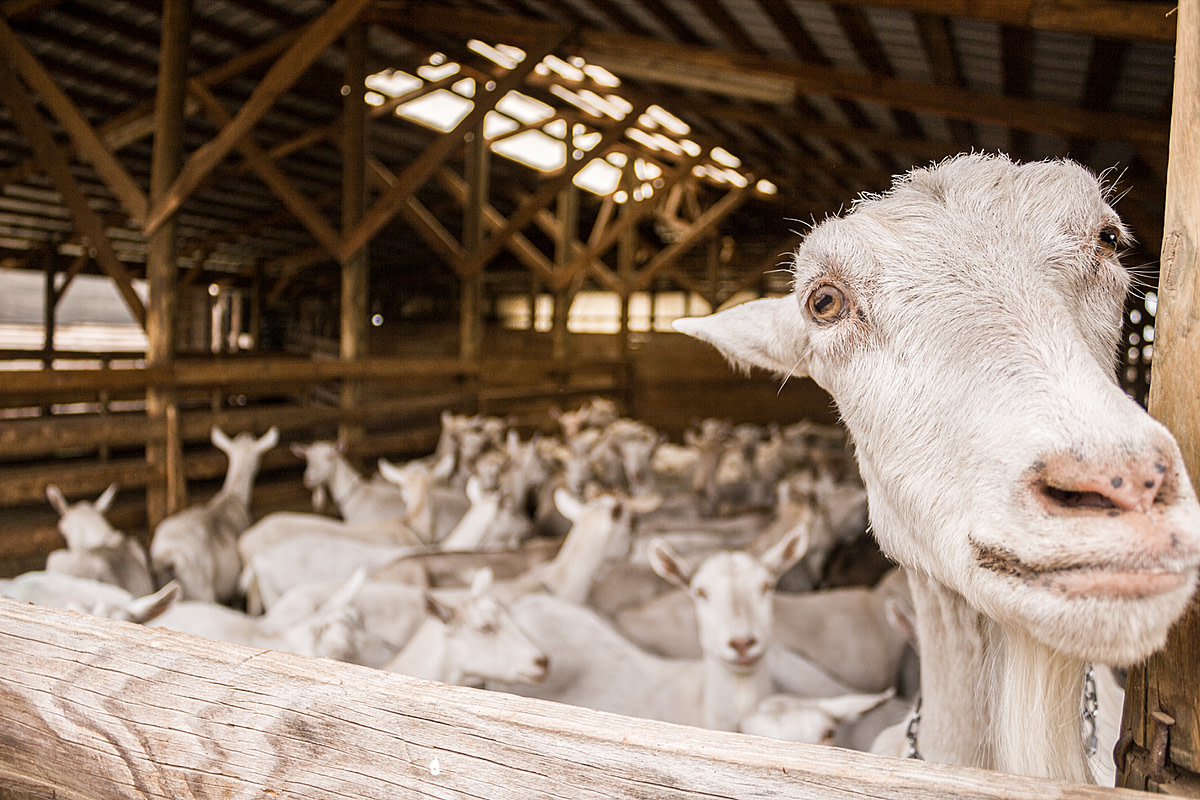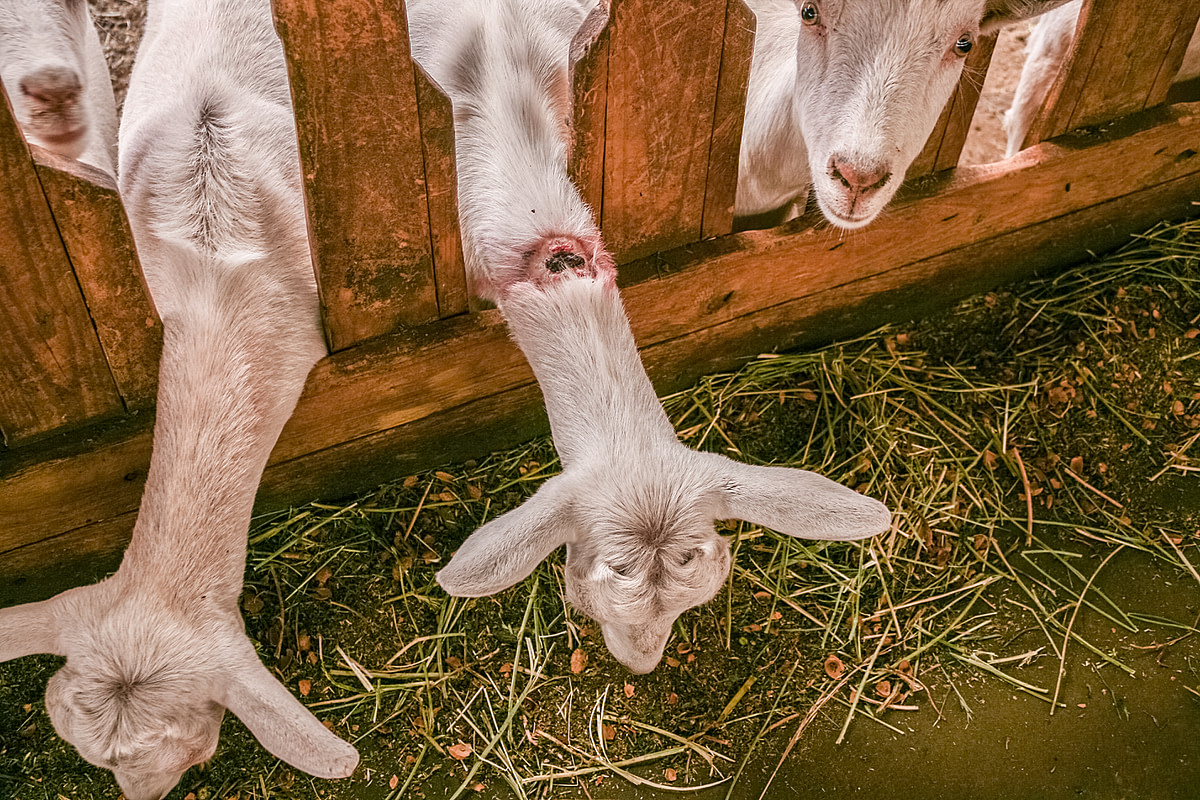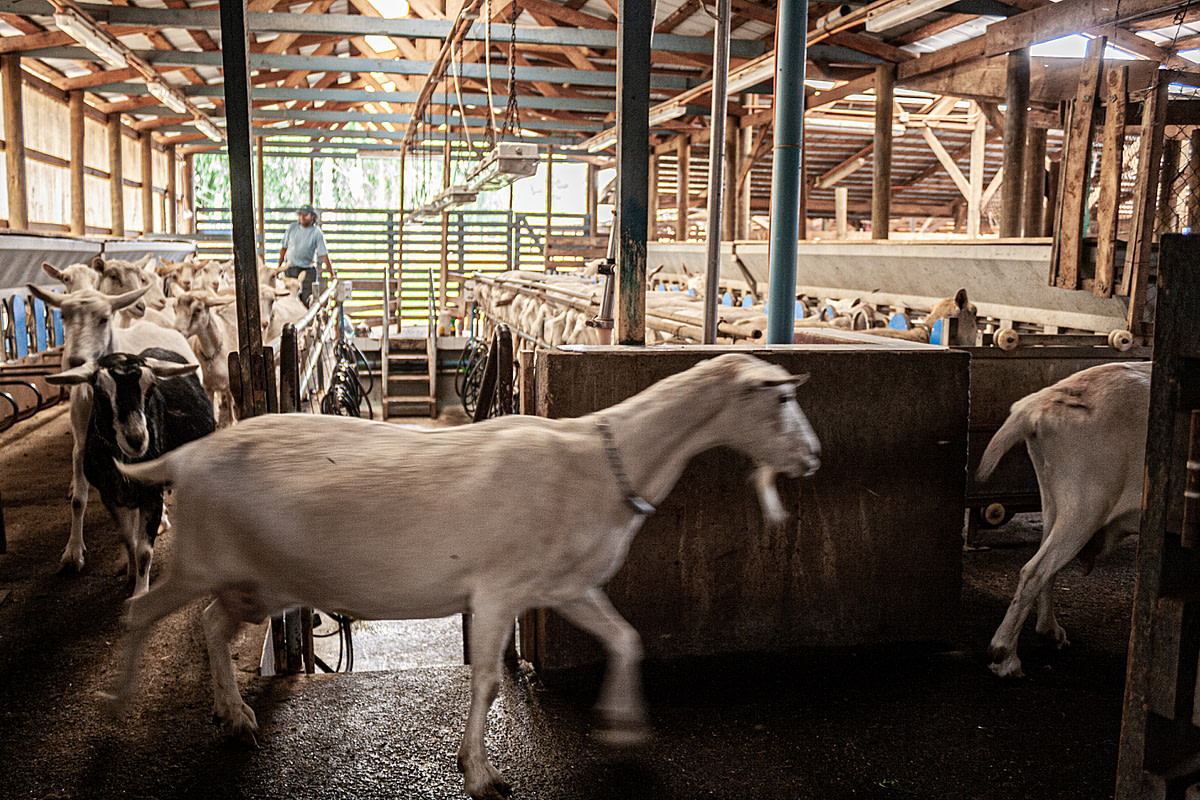A calf in a stall at a dairy farm located in the Melipilla commune, Chile. She is less than a week old and has already had ear tags affixed to her ears. Chile, 2012.
Gabriela Penela / We Animals
We Animals contributor, Gabriela Penela is a Chilean photographer, activist and founder of the project El Foco Animal. In 2010 she started to create a visual record of the conditions animals were forced to live in across various agricultural industries. Since 2015, her work has mainly focused on portraying rescued farm animals who are now permanent residents of Santuario Igualdad. Gabriela’s work exposes what animals are subjected to in the name of industry and provides a glimpse into the unique personalities of the individuals who were rescued from these places.
To mark World Day for Farmed Animals, we spoke with Gabriela to learn more about animal photojournalism in Latin America and what inspires her work.
Photographer: Gabriela Penela
Which came first for you: animals or photography? Can you tell us a little about your path to where you are today?
First for me were the animals. When I was 16 years old, I walked by a demo against vivisection and as I felt lots of empathy for the animals because of my dog with whom I shared many years, I decided to join this group. Thanks to the activist who worked at this research laboratory and exposed to the community what they were doing with the monkeys there, I realized how important an image is as a tool for activism and that was the way I wanted to help animals, so I studied photography and since then it’s been my way to contribute to the movement.

We Animals Contributor, Gabriela Penela with Gabriel, one of the residents of Santuario Igualdad.
What’s happening in animal advocacy in Chile?
In Chile, COVID-19 affected everyone and everything, animal defense groups and organizations included, but they remain active on social media emphasizing digital campaigns. Chile is going through major changes, politically speaking. We are now working on a new constitution and there are many organizations focusing on including animals in this new era, because now they are just considered commodities.
A calf suckles at the concrete wall that divides the stalls at a dairy farm in Chile. She is almost old enough to be inseminated for the first time. Chile, 2012.
Gabriela Penela / We Animals
What do you enjoy most about your work? What do you find most challenging?
What I enjoy the most is knowing that there are people who manage to empathize through an image. When someone writes to me saying that my photos have generated a change in their way of seeing animals and they decide to become vegan and/or activists, this is very positive for me. Working as a photographer in an animal sanctuary is also incredible, the excitement of being able to share with them, bond and portray them feeling comfortable is beautiful.
The most challenging part is learning to deal with the harshness of violence, those images that you block from your mind because of how shocking they are. Also staying calm and focused on the work you are doing even in hard moments to be able to communicate and have an impact on people and animals’ lives.
A lot of this work is about suffering and dying. How does it affect you? What do you do to not own that pain yourself?
This is a very relevant topic for me and it has had a great impact on my life. I’ve had moments in which I’ve taken some distance because I have burnt myself out. I have been doing therapy for years and I try to listen to myself when I know that I must give myself space, to understand that not because of that pause or space I care less about animals, but on the contrary, to be able to help them I have to be fine. This is something we do not talk about much in the movement and at some point it started to be so important that I talked about it on Instagram Live and podcasts with other Latin activists. Feeling guilt or shame for needing space, a pause or slowing down are some of the reasons we don’t talk about it or we don´t ask for help. I believe it is extremely necessary to make a change in that area in the animal rights movement. We must take care of ourselves.
Turkeys close to slaughter age are crowded into a shed with little room to move at a feedlot. Chile, 2012.
Gabriela Penela / We Animals
Who inspires your work? Do you have any top photography influences?
There are several activists who inspire me a lot from different areas and in different parts of the world, but especially the people who I work with and share all these years with as an activist in Chile. I feel a lot of inspiration and admiration for Sofía Godoy (documentary filmmaker), Jazmin Silva (digital content creator), Cristian Apiolaza (lawyer), Santuario Igualdad´s team (Marisol de la Reguera, Ariel Maluenda, Sandra Valencia and Sofía Godoy), who work to rescue and raise awareness about farm animals), and Jessica Barros (veterinarian). I’m also very inspired by all my fellow photographers, especially women, and my great influence has definitely been Jo-Anne McArthur.
Is there any particular image you’ve created that you think represents your work and what you’d like to communicate to the world particularly well? Tell us why.
I think I have more than one, but if I had to choose, it’s an image of Sandra, Santuario Igualdad´s worker, hugging a bull named Salvador at sunset. It’s an image that makes me feel closeness, warmth, love and peace, showing such a beautiful bond between a human and a bull, rescued from a dairy factory, sentenced to death for being a male. It fills me with hope; it makes me think that this world can be a fairer place for all animals, who deserve to live in peace.
How much creativity can you as a photographer bring to a scene? You’re reporting as a journalist, but how much are you also trying to include your perspective as an eye-witness, as well as your own creative expression?
The most important thing that I’ve learned over the years and the way I want to work is by individualizing those I photograph, trying to show through their eyes the emotions they are experiencing and hopefully generating empathy.
A goat with a wounded neck pokes her head through a fence to eat the grass on the other side. Goats are repeatedly immobilized by the neck for milking, sometimes causing injuries like this. Chile, 2011.
Gabriela Penela / We Animals
When I’m creating an image, I pay close attention to the environment and what I want to communicate with that image. For example, to appeal to the emotional side of viewers, I photograph the subject I’m going to portray at their height, as equals, focusing mainly on their appearance, since for me this is a very noticeable characteristic of each individual. In most cases I try to use natural light and in digital post-production (Lightroom), when I want to show a more cheerful image, I use more saturated colors, and when the image is sadder, I desaturate certain tones.
When preparing for a field assignment, what’s your go-to camera bag kit?
For economic reasons it has been difficult to have the ideal equipment to be able to make these images. I started with a semi-pro camera when I began to study photography. More than having the “perfect kit”, I focused on what I wanted to show despite the difficulties. Clearly with better quality equipment my images could also have been better but I have used my resources in the best possible way.
A few years ago I had only dedicated myself to photography at Santuario Igualdad. This year it has been impossible to work due to the pandemic but I usually have my camera, a flash (which I do not use in sanctuary photos), four lenses, two for portraits, a wide angle and zoom.
A cow covered in paint marks is immobilized in the body restrain system as a slaughterhouse worker prepares to stun her with a captive bolt to the head. Chile, 2012.
Gabriela Penela / We Animals
If you could issue an invitation to other photographers to take up animal photojournalism, what would you say? If you could issue an invitation to the media to include the work of animal photojournalists, what would you say?
To my fellow photographers, we have a very powerful tool in our hands and knowledge with which we could make great changes. Photography is a great way to do activism for animal rights and many times we forget the potential of an image. Photography lasts through time and at this moment we are showing the current reality and later it will also be part of history.
I would invite the media to open up to new visions, because people are changing, they are increasingly concerned about animals and this type of image reflects a reality that becomes more and more important every day.
What’s next for you in your work?
The current economic situation in Chile for animal rights activism is critical. The pandemic has hit hard. Working full-time as a photographer for animal rights, as an actual job, is not possible in my country. In my case, photography has always been more like volunteer work alongside my paid job, not related to activism but which allows me to pay the bills. It is hard to find balance between them.
I would love to be able to continue working as a volunteer at Santuario Igualdad because I think it is a good way to show people how important it is to be part of the change, and start doing photos again to show people the reality of animal exploitation, working with activists from different countries to complement our work and what we want to communicate.
Follow Gabriela’s work on Instagram: @elfocoanimal
Photographer: Gabriela Penela
View Gabriela’s work on the We Animals’s site.

